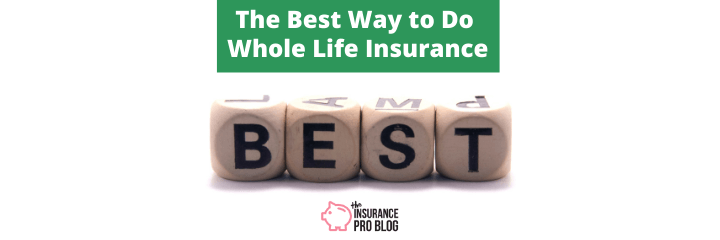Podcast: Play in new window | Download
When buying whole life insurance, it's tempting to want to figure out all the ways to optimize the policy. I don't just mean the foundational stuff like blending the policy and making heavy use of paid-up additions–but also the bigger picture stuff like “when should I take a loan,” “what's the best amount to put in the policy,” or “how long should I fund it for the best return?”
We field questions like this constantly, and the often underwhelming answer is that there is no answer.
Whole Life Insurance is Just a Tool
Whole life insurance does not possess any sort of intrinsic optimality. What I mean by that is, there is no specific right or wrong when it comes to the specific “how” of implementing a whole life policy.
For example, it's common for someone to approach us and say something like, “I have $500,000 in cash right now that I'd like to deploy in some other fashion. I don't have any immediate plans for the money and I've read some interesting things about whole life insurance. How should I put this money into a policy?”
Or, as another example, “I could reasonably contribute $20,000 per year to a whole life policy. What's the best number of years to do this?”
The two above questions have no answer. At least not yet. This is because the potential buyer's intentions for the money will greatly influence the answer to how best to approach policy design.
Sure whole life blending and paid-up additions will play a role–that's basic step-one sort of stuff. But the precise number of years to fund the policy and how to build the policy to accommodate this depends on the answer to several questions that help illuminate where the prospective policy owner intends to go with this policy.
Every Other Savings/Investment Strategy is Similar
This fact is not unique to whole life insurance. All plans that help you build wealth have a similar requirement to understand the end goal. Sure you can mindlessly contribute funds to an IRA or general brokerage account and most of the time accumulation of value will help in the sense that it makes you wealthier. This is could also be said for whole life insurance.
But both an investment account and a whole life insurance policy purchased for cash value accumulation become much better at accomplishing future goals if you have some idea of why you are using them.
This doesn't mean you have to have a perfectly mapped-out plan. The truth is, any skilled agent can pretty quickly fine-tune a policy by asking a few follow-up questions and refining the policy design around the potential buyer's intentions.
You Don't Have to Be Perfectly Correct
If figuring out exactly why you'd buy whole life insurance (or begin any other investment or savings plan) causes some anxiety because you aren't really sure what the exact end goal is, I have some good news. You don't need locked-in precision in terms of where you are going. While it's certainly helpful if you can paint as vivid a picture as possible about your planned future, it's not a deal-breaker if you can't.
A basic idea like using the policy for retirement or paying for educational expenses is generally good enough. As agents, we can take the liberty to make some assumptions about when these events most likely take place and use those loose timelines to set you up as optimally as possible given the information available.
These Rules Also Apply After Purchase
The circumstantial nature of determining what is truly best also applies to whole life policies after purchase. Our clients commonly ask us questions like: “I need to take some money out is it best to take a loan or a withdrawal from my policy?”
Or
“I'm nearing the end of the time I originally planned to put money into the policy, is it best to stop or should I continue putting money in it? If I continue to put money in it how long should I do that?”
The answer here depends on their specific situation and plans.
When it comes to loan versus withdrawal, the policyholder's plans to put the money back into the policy will most heavily influence the right course of action. Plans to one day put the money back usually work best as a loan. If there is no plan to put money back in, a withdrawal will likely be the better bet, unless we're talking retirement income.
For those nearing the end of the time they originally intended to put money into a policy but have the resources to continue paying premiums (a common situation in our experience) the answer comes down to what other options the policyholder has for their money. My typical answer is to think through what other places they could put the money. If the rate of return in those places is significantly higher without subjecting it to considerably higher risk, then it's time to cease funding the whole life insurance policy. If no other good alternatives appear to raise their hand, then keep putting money into the policy–and continue doing this until you either don't have the extra money to do it or another option presents itself that meets the criteria we just covered.

